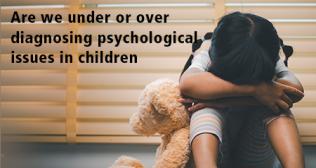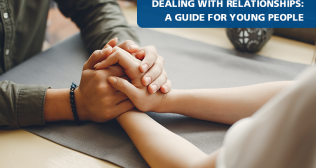
Bullying: The Hazard It Presents In Schools And Safeguarding Against It

Instances of individuals feeling bullied by another are frequently reported. It may be natural for us to believe that bullying is a facet of life at school and colleges. But bullying can raise its ugly head even at work or within the community we reside in. It can perhaps be a part of our households as well. But rightly so this is seen most frequently in schools where young children and adolescents spend a large majority of their time and where their personalities and attitudes are shaped.
The Rising Problem of Bullying in Schools
The problem of bullying has been in focus for decades. Despite the attention it has gathered over the years, it remains a problem which needs to be tackled with even greater vigor. The problem of bullying lies in the challenge it present to young people in being able to communicate about it and share the impact it has upon them. It would be surprising for all of us to see and recognize that almost 3 in 5 children may have experienced an episode of bullying or seen it happen to others around them. That is how frequently bullying happens at schools.
At the same time, young individuals find it difficult to be able to share what the experience of being a victim of bullying, a spectator or a bully can have upon oneself. Students have been known to share the negative emotional impact such episodes have upon them and how they affect their daily functioning making it at times difficult to focus on academics while also espousing within the self feelings of anxiety and sometimes even fear. Bullying impacts expectations and relationships. It makes it difficult to be able to develop a sense of security and comfort and also erodes an individuals’ self-confidence and can make them feel bad about their own selves.
Bullying Affects all Involved Parties
Typically most people believe that it is the one who gets bullied who is affected the most in an instance of bullying. However, the truth is much larger than such a simplistic notion of how bullying can affect and impact. Yes, the individual who gets bullied is very significantly impacted. But the person who observes also gets affected. The fact is that whether you are experiencing a bullying episode directly or vicariously, it does challenge the individuals beliefs about the world, about safety, how people are or can be, it affects the ability to trust and believe and also takes away from believes about one’s own individual self.
The person who bullies is also impacted by the bullying he may engage in. This can be a difficult aspect to conceptualize. However, the reality is that even for the person who is bullying there is a negative impact on their self as well as their relationships. The way they are viewed by others and the skills they develop over time are deficient which prevent them from being able to achieve success later in life. For a lot of bullies seeing the impact of their actions of others can be a difficult experience which can challenge how they look at their own selves.
Safeguarding Against Bullying in Schools
There are some steps which must be taken to combat the problem of bullying in schools. These are an essential if we want to eliminate this problem entirely. Some of the things which must be kept in mind when trying to work in this area include the following aspects.
* Acknowledge that bullying is a problem. Regardless of how big or how good a school, its administrators or teachers bullying is a problem that pervades everywhere. It is imperative that we acknowledge its existence as an essential first step in making a move towards eliminating it.
* Work towards developing effective policies. Have a No Bullying policy instated at school which clearly defines what bullying is, what acts would be categorized as acts of bullying, what the consequences would be.
* Create a safe zone for reporting of such instances. It would be surprising to know that a large majority of incidents of bullying go unreported because students may not know either how it needs to be done, who to approach or may be even fearful of the consequences or of being named.
* Instate an atmosphere in school where bullying talked about and discussed and is not made a subject which need be looked at because it does not exist. Creating more avenues to promote sharing of experiences goes a long way in creating a safe atmosphere and encourages students to share easily.
* Have a step-by-step mechanism which makes the process of working on incidents of bullying a very transparent one.
* Do not simply penalize but find a way to engage individuals who may be bullying.
* Empower those who observe to be able to do something in the situation. Frequently those who are observers are not able to determine what it is that they can do. Thus, giving them concrete things that can be done is very helpful.
Bullying is a growing menace which needs to be addressed urgently. Creating methodologies for combating such aspects is a must. It is here that Bullying Prevention programs find their place. One such effort in this direction is the “Bully to Buddy program” designed by the Department of Mental Health and Behavioural Sciences at Fortis Healthcare that works hand-in-hand with schools to help them fine tune their strategies and create effective, self-sustaining systems.



















